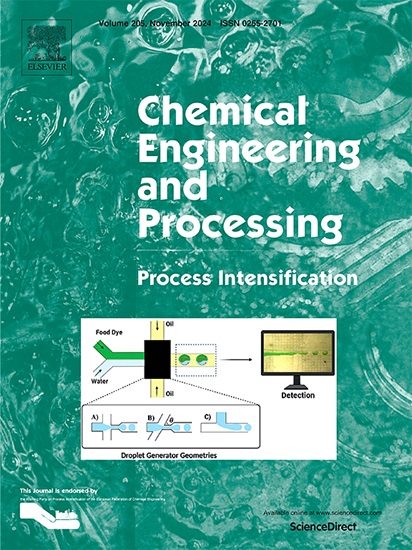Treatment of membrane concentrates using anodic oxidation process: A review
IF 3.8
3区 工程技术
Q3 ENERGY & FUELS
Chemical Engineering and Processing - Process Intensification
Pub Date : 2025-05-12
DOI:10.1016/j.cep.2025.110357
引用次数: 0
Abstract
Membrane processes, including nanofiltration and reverse osmosis, are essential in water reuse due to their ability to deliver consistently high-quality treated water. However, these processes generate membrane concentrates (MC), highly pollutant-laden waste streams that present significant treatment and disposal challenges. Conventional treatment methods, while effective, often face limitations such as high operational costs, environmental risks, and inefficiencies in handling complex effluents. Anodic oxidation (AO), an advanced oxidation process, offers a promising solution for MC management. By generating reactive species, AO can efficiently degrade refractory organic pollutants, thereby improving the overall treatment effectiveness. This approach aligns with process intensification principles by enhancing energy efficiency and reducing waste discharge, as it enables the treatment and potential reuse of a stream previously considered a residual by-product from the membrane process. Therefore, this review highlights the potential of AO in enhancing water recovery and addressing sustainability challenges in MC management. Key considerations for optimizing AO performance, including operating conditions and effluent-specific parameters, are discussed to support its broader application in MC treatment and resource recovery.

阳极氧化法处理膜精矿的研究进展
膜处理,包括纳滤和反渗透,在水回用中是必不可少的,因为它们能够提供始终如一的高质量处理水。然而,这些工艺产生的膜浓缩物(MC)是高污染物的废物流,对处理和处置提出了重大挑战。常规处理方法虽然有效,但往往面临操作成本高、环境风险大、处理复杂废水效率低等限制。阳极氧化(AO)是一种先进的氧化工艺,为MC管理提供了很有前途的解决方案。AO通过生成反应物质,可以有效降解难降解的有机污染物,从而提高整体处理效果。这种方法通过提高能源效率和减少废物排放,符合过程强化原则,因为它可以处理和再利用以前被认为是膜工艺残留副产品的废水。因此,本综述强调了AO在加强水回收和解决MC管理中可持续性挑战方面的潜力。讨论了优化AO性能的关键考虑因素,包括操作条件和废水特定参数,以支持其在MC处理和资源回收中的更广泛应用。
本文章由计算机程序翻译,如有差异,请以英文原文为准。
求助全文
约1分钟内获得全文
求助全文
来源期刊
CiteScore
7.80
自引率
9.30%
发文量
408
审稿时长
49 days
期刊介绍:
Chemical Engineering and Processing: Process Intensification is intended for practicing researchers in industry and academia, working in the field of Process Engineering and related to the subject of Process Intensification.Articles published in the Journal demonstrate how novel discoveries, developments and theories in the field of Process Engineering and in particular Process Intensification may be used for analysis and design of innovative equipment and processing methods with substantially improved sustainability, efficiency and environmental performance.

 求助内容:
求助内容: 应助结果提醒方式:
应助结果提醒方式:


